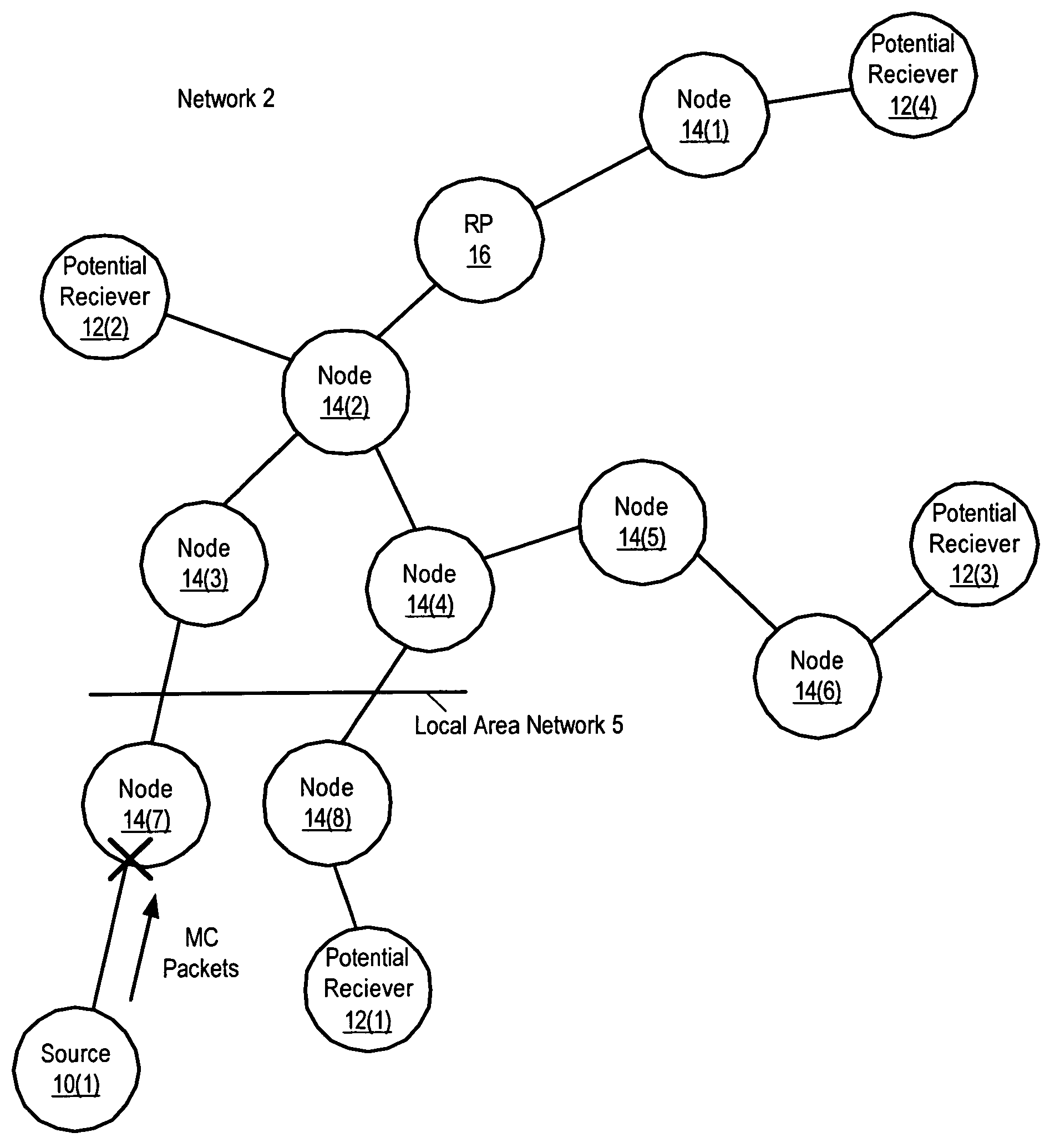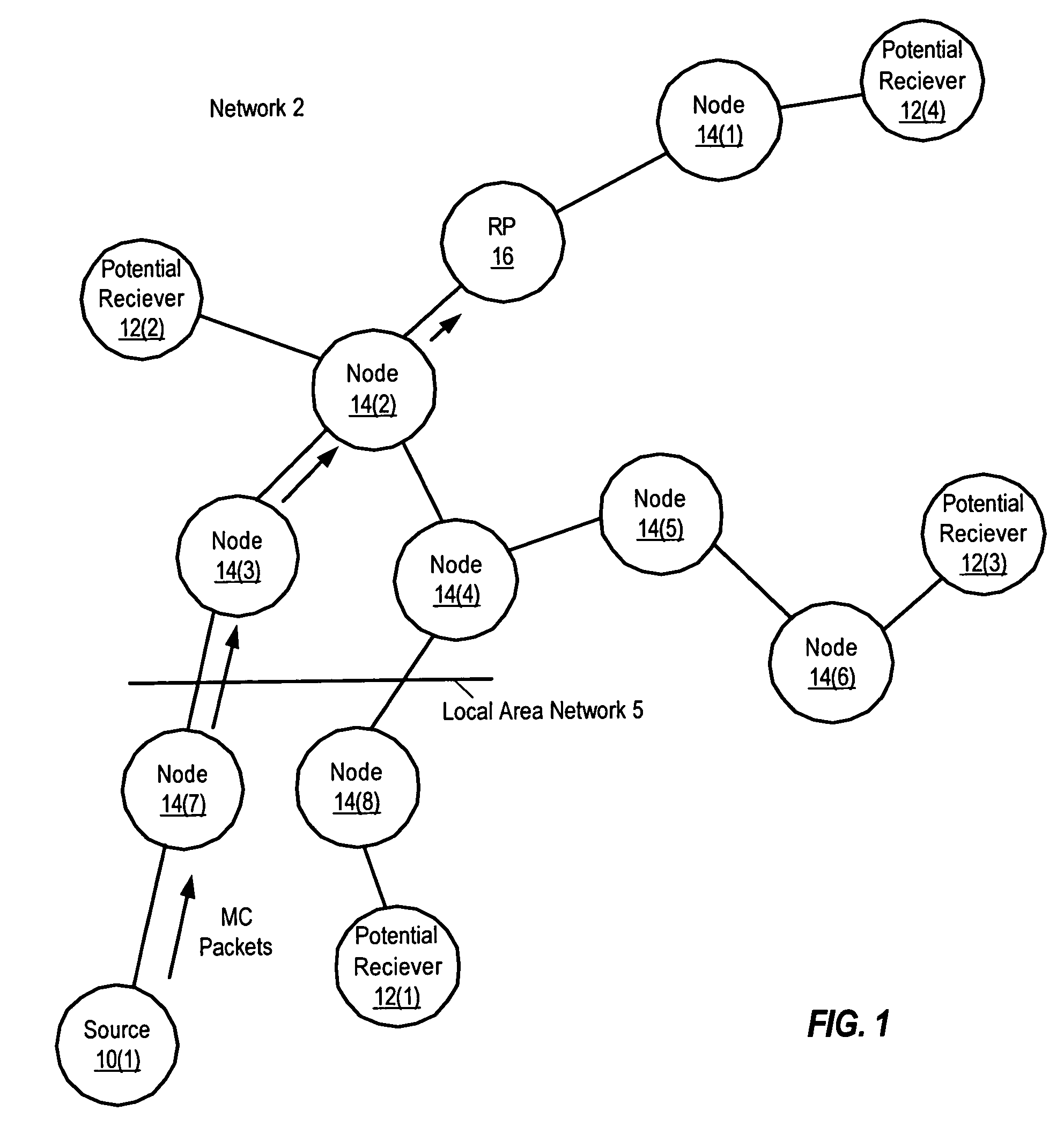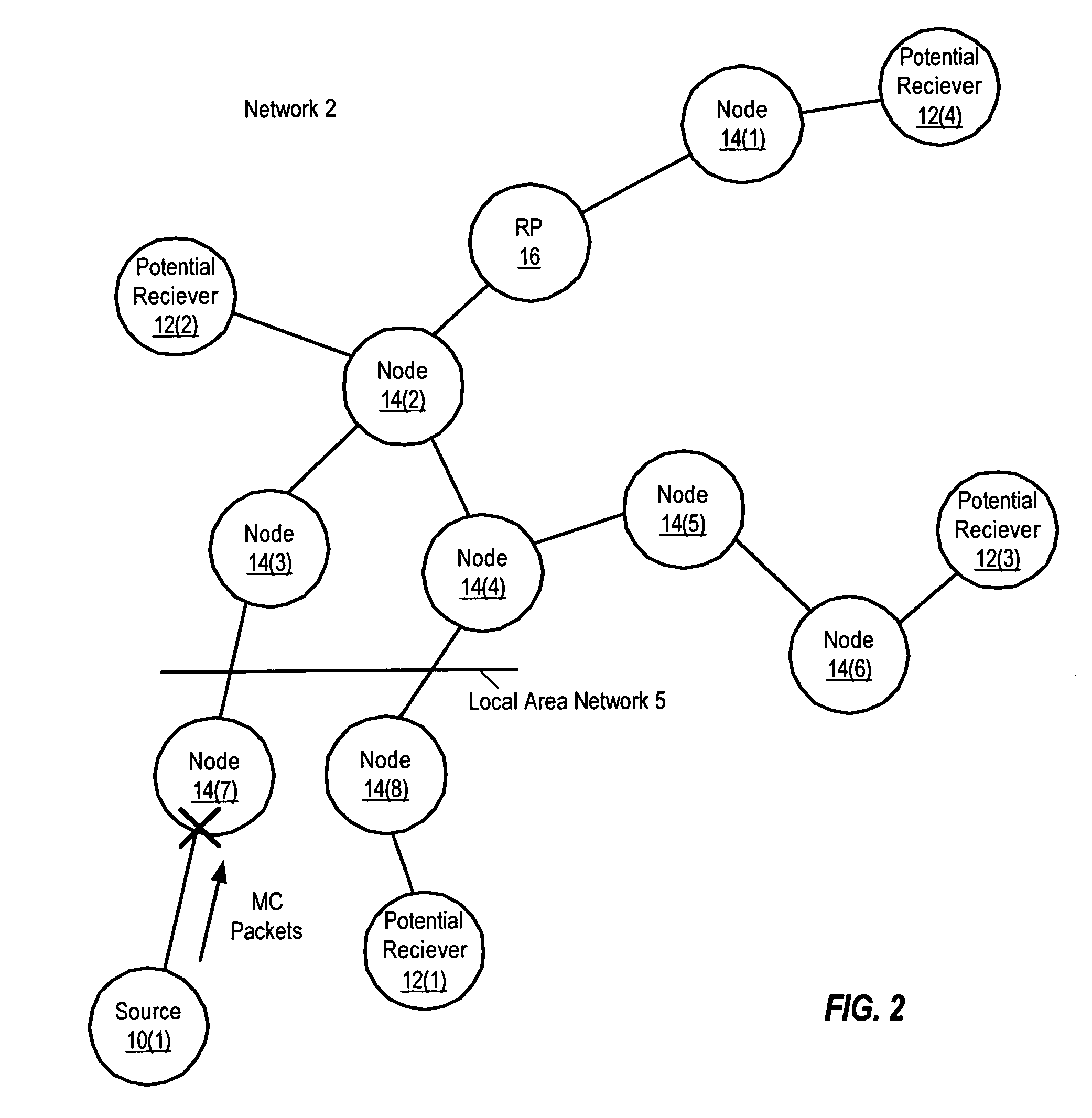Bidirectional multicast protocol with upstream and downstream join messages
a multicast protocol and message technology, applied in the field of multicast routing, can solve the problems of reducing network performance, wasting network bandwidth, and unable to distinguish between groups that currently have receivers and groups that do
- Summary
- Abstract
- Description
- Claims
- Application Information
AI Technical Summary
Benefits of technology
Problems solved by technology
Method used
Image
Examples
Embodiment Construction
[0012]A network that uses a bidirectional multicast routing protocol, such as PIM-Bidir, to propagate multicast messages can implement two types of join messages: upstream join messages and downstream join messages. An upstream join is sent in the upstream direction from receivers toward the rendezvous point. In contrast, downstream joins are sent in the opposite direction. In response to receiving either type of join message, a node creates a (*,G) multicast forwarding state for the multicast group G specified in the join message, if the forwarding state does not already exist. If the forwarding state for group G already exists, the node will update the forwarding state. If the join message is an upstream join, the new (*,G) multicast forwarding state will include the receiving interface, but not the reverse path forwarding (RPF) interface (the interface that is used to send messages to the rendezvous point), in the outgoing interface (OIF) list. Additionally, in some embodiments, ...
PUM
 Login to View More
Login to View More Abstract
Description
Claims
Application Information
 Login to View More
Login to View More - R&D
- Intellectual Property
- Life Sciences
- Materials
- Tech Scout
- Unparalleled Data Quality
- Higher Quality Content
- 60% Fewer Hallucinations
Browse by: Latest US Patents, China's latest patents, Technical Efficacy Thesaurus, Application Domain, Technology Topic, Popular Technical Reports.
© 2025 PatSnap. All rights reserved.Legal|Privacy policy|Modern Slavery Act Transparency Statement|Sitemap|About US| Contact US: help@patsnap.com



